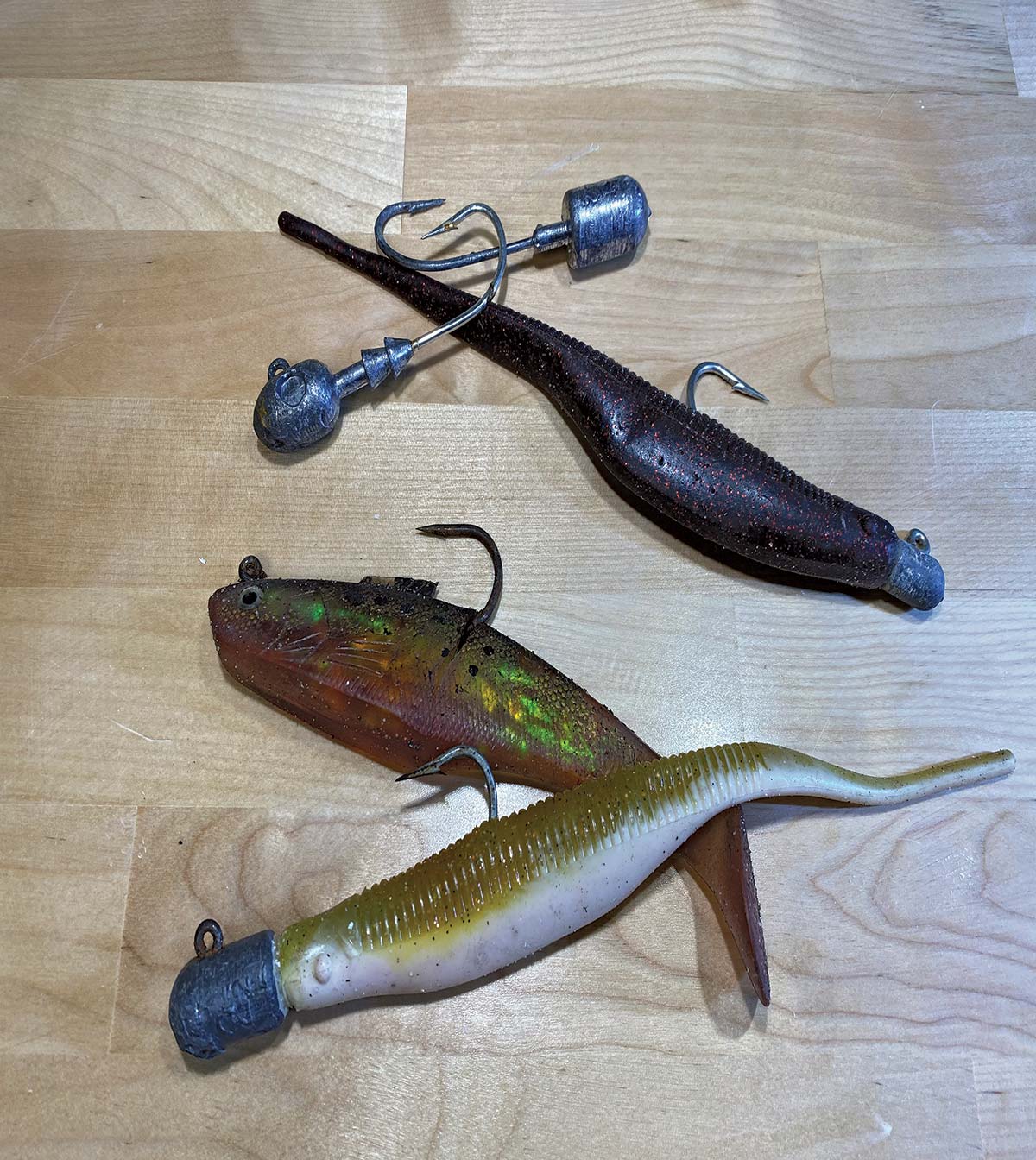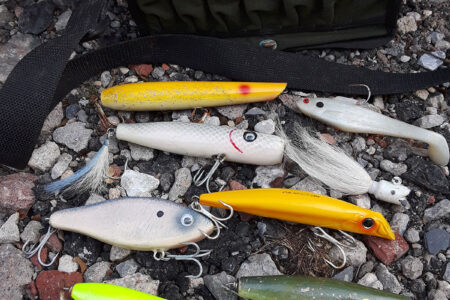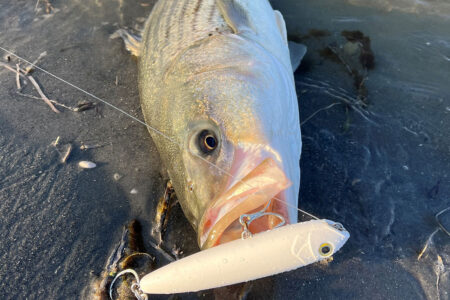
Here’s an easy way to extend the life of your soft plastic baits.
It happens almost every year; you find a nice pod of stripers that are willing to strike soft plastic baits, but then you feel that unmistakable bump and reel up to a lure that is bitten in half by a bluefish. Now I’m not sure about you, but when my focus is on stripers, these scenarios can drive me crazy. Not only is it annoying to keep changing out a lead head with a new plastic bait, but it can also get expensive, especially if you’re fishing with a pre-made plastic such as a sand eel imitation or a Storm shad style of lure. It’s for this very reason that I always make sure to carry a small tube of superglue in my bag every time I head out.
In a pinch, super glue works great for those on the water quick repairs to plastic lures that have been chewed up by bluefish. It also comes especially handy when the stripers are keyed into a specific bait type and that one soft plastic lure you’re throwing is the only thing they will eat, yet you only have one more left in your bag. Now obviously, if a bluefish rips the lure clean off having all the glue in the world won’t help, but if your lure comes back damaged yet still intact, you can salvage it.
Start by drying the lure off with a rag or paper towel, then carefully line up the bitten sections and place a few drops of super glue on them. Take extra care to make sure that the parts line up correctly because once the glue settles and hardens you cannot redo the process. The glue should take from a few seconds up to about a minute or so to set and run your finger over the area to make sure it has hardened. Once hardened you are back in action and ready to fish again.
One more application that I have used super glue for with success is keeping soft plastics anchored on a jighead. Have you ever thrown a plastic that has caught a few fish and notice the lure keeps sliding down the jig head? If so put a few drops up near the head of the jig where the plastic bait sits on top. By doing this you should be able to extend the life of your plastic bait by at least another fish or two. Think of it as a fish or two more that were caught without having to dig back into your bag again. Will it be a permanent fix? Absolutely not, but this trick has saved me on more than one occasion when I was running low on extra baits. If that was the hot lure of the day and you only have one in your arsenal to throw, trust me when I say it’ll come in handy.
There are plenty of different super glue brands on the market and you can find them practically in every hardware store in the country. I have found that the “Crazy Glue” brand works best for my needs. Not only is it cheap, but it also sets quickly on my plastic baits, and it has saved more than a few fishing trips that were interrupted by marauding bluefish. Make sure you are careful not to get the glue on your fingers because it can be a very painful experience if you get them stuck together.
With the fishing season creeping up on us, now would be a good time to throw a few tubes of glue in your bag while you’re still getting gear ready for the nicer weather ahead. Before you know it, our bays and estuaries will once again fill with life in the way of stripers and bluefish as they make their journey up the coast for the annual spring run. When the blues settle in, having something to make a quick and easy repair is essential in extending the life of your plastic baits. By doing this, you’re catching more fish and saving a few bucks all at the same time.


